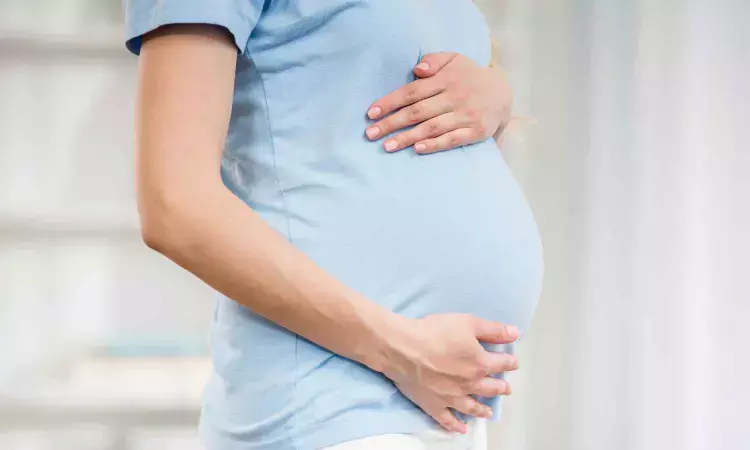- Home
- Medical news & Guidelines
- Anesthesiology
- Cardiology and CTVS
- Critical Care
- Dentistry
- Dermatology
- Diabetes and Endocrinology
- ENT
- Gastroenterology
- Medicine
- Nephrology
- Neurology
- Obstretics-Gynaecology
- Oncology
- Ophthalmology
- Orthopaedics
- Pediatrics-Neonatology
- Psychiatry
- Pulmonology
- Radiology
- Surgery
- Urology
- Laboratory Medicine
- Diet
- Nursing
- Paramedical
- Physiotherapy
- Health news
- Fact Check
- Bone Health Fact Check
- Brain Health Fact Check
- Cancer Related Fact Check
- Child Care Fact Check
- Dental and oral health fact check
- Diabetes and metabolic health fact check
- Diet and Nutrition Fact Check
- Eye and ENT Care Fact Check
- Fitness fact check
- Gut health fact check
- Heart health fact check
- Kidney health fact check
- Medical education fact check
- Men's health fact check
- Respiratory fact check
- Skin and hair care fact check
- Vaccine and Immunization fact check
- Women's health fact check
- AYUSH
- State News
- Andaman and Nicobar Islands
- Andhra Pradesh
- Arunachal Pradesh
- Assam
- Bihar
- Chandigarh
- Chattisgarh
- Dadra and Nagar Haveli
- Daman and Diu
- Delhi
- Goa
- Gujarat
- Haryana
- Himachal Pradesh
- Jammu & Kashmir
- Jharkhand
- Karnataka
- Kerala
- Ladakh
- Lakshadweep
- Madhya Pradesh
- Maharashtra
- Manipur
- Meghalaya
- Mizoram
- Nagaland
- Odisha
- Puducherry
- Punjab
- Rajasthan
- Sikkim
- Tamil Nadu
- Telangana
- Tripura
- Uttar Pradesh
- Uttrakhand
- West Bengal
- Medical Education
- Industry
Optimal Timing of antenatal Corticosteroid administration in pregnancies complicated by early-onset fetal growth Restriction: OPTICORE study

Early-onset fetal growth restriction as consequence of placental insufficiency frequently requires iatrogenic preterm birth. Administration of antenatal corticosteroids reduces risks of neonatal morbidity and mortality following preterm birth and is most beneficial if the neonate is delivered within 2 weeks following treatment. International guidelines on fetal growth restriction pregnancies do not provide directives regarding the timing of antenatal corticosteroids, resulting in practice variation.
This study compared the 2 main timing strategies of antenatal corticosteroids administration in the Netherlands for early-onset fetal growth restriction pregnancies: administration when the umbilical artery shows a pulsatility index above the 95th centile with (A) positive enddiastolic flow vs (B) absent or reversed end-diastolic velocity.
A multicenter retrospective cohort study was performed in 6 tertiary hospitals in the Netherlands between 2012 and 2021. Three hospitals practiced timing strategy A and 3 strategy B. The primary outcome was defined as a composite of perinatal and in-hospital mortality. Secondary outcomes were in line with the core outcome set for fetal growth restriction. Mixed effects analyses were performed adjusted for birthweight z-score and gestational age at birth to compare the 2 timing strategies.
A total of 1453 patients were included, of whom 871 and 582 were treated according to timing strategy A and B, respectively. Corticosteroids were administered at a mean gestational age of 28 weeks and 3 days (standard deviation 16.0 days) in timing strategy A and 28 weeks and 4 days (standard deviation 15.8 days) in timing strategy B. The median birthweights were 1050 (range 795, 1350) and 1060 (range 801, 1339) in timing strategy A and B, respectively.
Although not statistically significant, rates of perinatal and in-hospital mortality were increased in timing strategy B infants (7.2% vs 9.8%; adjusted odds ratio 1.47; 95% confidence interval 0.97-2.22, reference A). 52.8% and 53.6% of patients in strategy A and B, respectively, delivered within the corticosteroids therapeutic window of 2 to 14 days (P value .663), with a median time between corticosteroid administration and delivery of 6 days for strategy A and 6 days for strategy B. Timing strategy B was associated with more necrotizing enterocolitis (3.7% vs 7.6%; adjusted odds ratio 2.18; 95% confidence interval 1.29-3.69), but less respiratory distress syndrome (39.6% vs 34.5%; adjusted odds ratio 0.63; 95% confidence interval 0.45-0.88) and bronchopulmonary dysplasia (18.9% vs 17.4%; adjusted odds ratio 0.69; 95% confidence interval 0.50-0.96). Other outcomes were similar between groups.
Although not statistically significant, rates of perinatal and in-hospital mortality were higher in timing strategy B infants (i.e, CCS administration when absent/reversed end-diastolic velocity is detected). With regard to secondary outcomes, rates of NEC 2A were significantly increased in timing strategy B offspring. Conversely, rates of RDS and BPD were significantly decreased in timing strategy B infants. Of note, time intervals between CCS administration and delivery were similar between both groups with almost 50% of patients delivering outside the CCS therapeutic window. Consequently, the difference in perinatal and in-hospital mortality rates between treatment strategies could not be related to the timing of antenatal CCS in treatment, but may be attributed to center effects of unknown nature.
To conclude, although not statistically significant, rates of the composite of perinatal and in-hospital mortality were increased in timing strategy B hospitals. There is, however, no difference in the time interval between CCS and delivery, birthweight, and gestational age at delivery between both groups which could explain this difference. Furthermore, as almost half of the patients delivered outside the therapeutic CCS window, there is a strong and urgent need for the development of new, presumably multivariate, timing strategies of antenatal CCS.
Source: van de Meent M, Ganzevoort W, Gordijn SJ, et al. OPtimal TIming of antenatal COrticosteroid administration in pregnancies complicated by early-onset fetal growth REstriction: results of a large multicenter cohort study (the OPTICORE study). Am J Obstet Gynecol 2025;233:64.e1-17.
MBBS, MD Obstetrics and Gynecology
Dr Nirali Kapoor has completed her MBBS from GMC Jamnagar and MD Obstetrics and Gynecology from AIIMS Rishikesh. She underwent training in trauma/emergency medicine non academic residency in AIIMS Delhi for an year after her MBBS. Post her MD, she has joined in a Multispeciality hospital in Amritsar. She is actively involved in cases concerning fetal medicine, infertility and minimal invasive procedures as well as research activities involved around the fields of interest.


